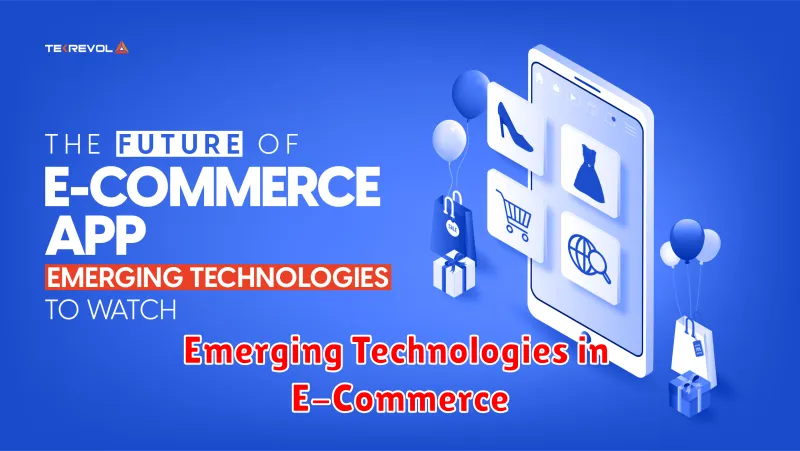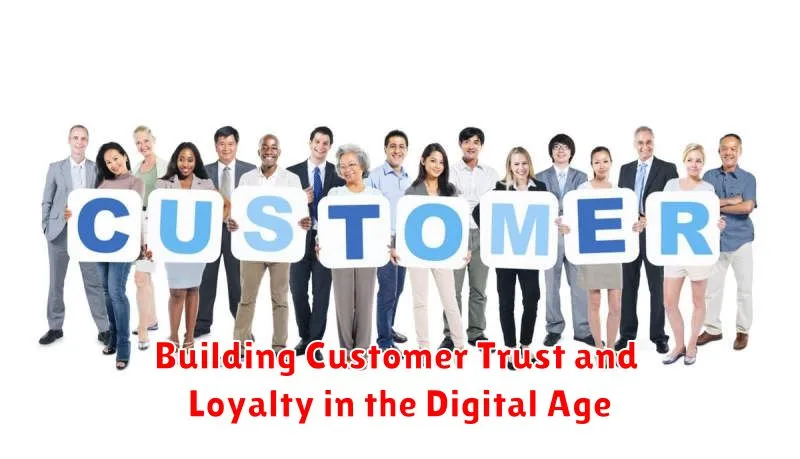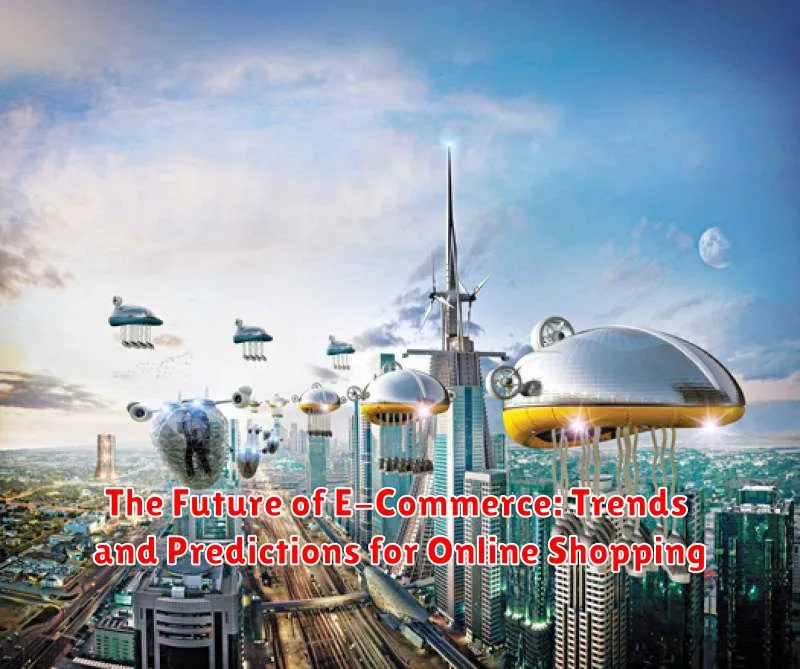The future of e-commerce is rapidly evolving, driven by technological advancements, changing consumer behavior, and a dynamic global landscape. This article explores the emerging trends and predictions that are shaping the online shopping experience, providing insights into what businesses and consumers can expect in the coming years. Understanding these key developments, from the rise of mobile commerce and the integration of artificial intelligence to the increasing importance of personalized experiences and sustainable practices, is crucial for navigating the ever-changing world of e-commerce. We will delve into the impact of these trends on various aspects of online shopping, including customer service, logistics, and marketing strategies.
From the metaverse and augmented reality to the growing influence of social commerce and the continued expansion of cross-border e-commerce, the future of online shopping promises to be both exciting and transformative. This article will examine the key e-commerce trends and predictions, offering valuable perspectives on how businesses can adapt and thrive in this competitive landscape. We will analyze the potential of emerging technologies like blockchain and the Internet of Things (IoT) to revolutionize e-commerce operations and create new opportunities for growth. By understanding these future trends, businesses can position themselves for success and leverage the power of online shopping to reach new customers and enhance the overall customer experience.
Emerging Technologies in E-Commerce

The e-commerce landscape is constantly evolving, driven by innovative technologies that enhance the shopping experience. Augmented reality (AR) and virtual reality (VR) are transforming how consumers interact with products online. AR allows customers to visualize products in their own environment before purchasing, while VR creates immersive shopping experiences.
Blockchain technology is also making inroads, offering increased security and transparency in transactions. It enables secure and efficient tracking of products throughout the supply chain, building trust between buyers and sellers.
Furthermore, the Internet of Things (IoT) is playing a growing role in e-commerce. Connected devices gather data on consumer preferences and behavior, enabling personalized recommendations and targeted marketing. This data-driven approach allows businesses to better understand their customers and offer tailored shopping experiences.
The Rise of Mobile Commerce and Social Commerce
Mobile commerce (m-commerce) continues its rapid ascent, transforming how consumers shop online. The convenience of smartphones and tablets allows shoppers to browse and purchase products anytime, anywhere. This accessibility fuels the growth of m-commerce, making it a dominant force in the e-commerce landscape.
Alongside m-commerce, social commerce is gaining significant traction. Platforms like Instagram, Facebook, and Pinterest are increasingly integrated with shopping functionalities, allowing users to discover and purchase products directly within their social media feeds. This seamless integration simplifies the buying process and leverages the power of social influence to drive sales.
The convergence of mobile and social commerce presents unique opportunities for businesses. Streamlined checkout processes on mobile devices and targeted advertising on social media platforms are crucial for maximizing conversions. As these trends evolve, businesses must adapt their strategies to effectively engage with consumers in these dynamic digital environments.
The Impact of Artificial Intelligence and Machine Learning
Artificial intelligence (AI) and machine learning (ML) are rapidly transforming the e-commerce landscape. These technologies are enabling businesses to offer more personalized shopping experiences, optimize pricing strategies, and improve customer service.
Personalized Recommendations: AI algorithms analyze vast amounts of data, including browsing history, purchase patterns, and demographics, to provide customers with tailored product recommendations. This enhances customer engagement and drives sales.
Chatbots and Virtual Assistants: AI-powered chatbots provide instant customer support, answering queries, resolving issues, and guiding customers through the purchasing process. This improves customer satisfaction and reduces the workload on human customer service representatives.
Fraud Detection and Prevention: Machine learning algorithms can identify and flag suspicious transactions, protecting both businesses and consumers from fraud. This enhances security and builds trust in online shopping platforms.
Inventory Management and Supply Chain Optimization: AI can predict demand fluctuations, optimize inventory levels, and streamline supply chain operations. This reduces costs and improves efficiency.
The Growing Importance of Personalization
In the evolving landscape of e-commerce, personalization is no longer a luxury but a necessity. Customers now expect tailored experiences that cater to their individual preferences and needs.
Data-driven insights are key to achieving effective personalization. By analyzing customer browsing history, purchase patterns, and demographics, businesses can create targeted product recommendations, personalized offers, and customized marketing campaigns.
This approach fosters a stronger sense of customer loyalty and drives conversions. When shoppers feel understood and valued, they are more likely to engage with a brand and make repeat purchases. Personalization also streamlines the shopping journey, making it easier for customers to find what they’re looking for quickly and efficiently.
Implementing personalization strategies requires robust data analytics capabilities and the ability to segment customers effectively. The ultimate goal is to deliver the right message, to the right customer, at the right time, creating a seamless and engaging online shopping experience.
The Evolution of Payment Methods in Online Shopping
The way consumers pay for online purchases is constantly evolving, driven by demands for greater security, convenience, and speed. Digital wallets have become increasingly prevalent, offering a streamlined checkout experience and often integrating loyalty programs and discounts.
Contactless payments, facilitated by near-field communication (NFC) technology, are gaining traction, particularly for in-store purchases made through mobile devices. Biometric authentication, such as fingerprint and facial recognition, adds an extra layer of security to these transactions.
Buy Now, Pay Later (BNPL) services have disrupted traditional credit models, allowing customers to split their purchases into installments. This option appeals particularly to younger demographics and can boost sales for merchants, although responsible lending practices are crucial.
The emergence of cryptocurrencies as a payment method is also noteworthy, though widespread adoption still faces hurdles regarding regulation, volatility, and user understanding.
Looking ahead, the evolution of payment technology will likely focus on enhancing security, simplifying cross-border transactions, and integrating with emerging platforms like the metaverse.
The Future of Delivery and Logistics
The future of e-commerce delivery and logistics is poised for significant transformation, driven by evolving consumer expectations and technological advancements. Speed and efficiency will be paramount.
We can expect to see a rise in autonomous delivery methods, including drones and self-driving vehicles. These technologies offer the potential to streamline operations, reduce costs, and accelerate delivery times, particularly for last-mile delivery.
Real-time tracking and enhanced delivery prediction accuracy will become increasingly sophisticated, empowering customers with greater control and visibility over their orders. Delivery customization will also play a key role, with customers able to select preferred delivery windows and locations with greater precision.
Micro-fulfillment centers strategically located closer to urban areas will further optimize delivery speed and reduce transportation costs. The integration of artificial intelligence and machine learning will optimize logistics routes and warehouse management for greater efficiency.
The Role of Sustainability in E-Commerce
Sustainability is no longer a niche concern but a core value driving consumer choices and business strategies in the e-commerce landscape. Customers are increasingly aware of the environmental impact of their purchases, demanding eco-friendly practices from online retailers.
Several factors contribute to this shift. Increased awareness of carbon emissions related to shipping and packaging is a major driver. Consumers are seeking out brands that prioritize sustainable packaging options, reduced shipping distances, and carbon offsetting programs.
Furthermore, the rise of ethical consumerism places emphasis on the entire supply chain. Shoppers are interested in the origins of products, fair labor practices, and the overall environmental impact of production. Transparency and traceability are crucial for brands to build trust and demonstrate their commitment to sustainability.
E-commerce businesses are responding to these demands by implementing various sustainable practices. This includes utilizing recycled and biodegradable packaging materials, optimizing logistics for reduced transportation impact, and partnering with sustainable suppliers.
Building Customer Trust and Loyalty in the Digital Age

In the increasingly competitive e-commerce landscape, building and maintaining customer trust and loyalty is paramount. Transparency is key. Clearly communicating data privacy policies, return processes, and pricing builds confidence.
Authenticity also plays a crucial role. Brands that showcase genuine values and engage in honest communication resonate with customers. Personalized experiences are becoming increasingly important. Utilizing data to tailor product recommendations and offers demonstrates an understanding of individual customer needs and preferences, fostering a stronger connection.
Proactive customer service is essential. Addressing inquiries and resolving issues efficiently builds trust and demonstrates commitment to customer satisfaction. Investing in secure payment gateways and protecting customer data are non-negotiable aspects of building trust in the digital age.

